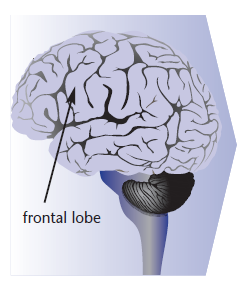Explanations of Autism
1. Cold-parenting
Leo Kanner (1943) first identified the common features of autism and claimed that the condition was due to a genuine lack of maternal warmth towards a child, and a lack of attachment to the child (the ‘refrigerator mother’). Bettelheim (1967) popularised these ideas, comparing the autistic child to a prisoner in a concentration camp and parents to SS guards. He suggested that autistic children withdrew as a response to the cruel and unloving situation at home. Bettelheim based this on his own observations of the parents of autistic children.
Evaluation:
- Kanner may have confused cause and effect. Cold-parenting might be an effect of a child lacking important social skills.
- This explanation is now regarded as over-simplistic and erroneous – blame is no longer placed on parents. Bettelheim claimed an 85% success rate for his work, but this was discredited after his death.
2. Biological explanations
Genetic – Various studies have identified certain genes as being common to individuals with autism. For example, Geschwind et al. (2005) found a gene on chromosome 17 linked to autism in boys. The effect of this gene on boys rather than girls may explain the increased incidence of autism in boys. Asperger’s syndrome is a similar condition to autism except that individuals tend to have normal or high IQs. In fact, the range of different symptoms has led to the term ‘autistic spectrum disorders’.
Neurological correlates – Some studies have found evidence of a link between autism and low levels of serotonin. Sutcliffe et al. (2005) found that serotonin abnormalities in autistic individuals were also linked to chromosome 17.
Evaluation:
- The research on the biological basis of autism reflects the complexity of the disorder. There are no clear genetic or biochemical causes, probably because autism is in fact a range of disorders where a range of autism-related genes are sufficient, but none are necessary. Autism is a complex disorder and is likely to be caused by an array of genes rather than one single gene.
- The fact that 100% concordance has not been found between the presence of a gene and autism suggests that biology cannot be the sole explanation.
3. Cognitive explanations
Theory of mind (ToM) is the ability to understand what is going on in another person’s mind, to ‘guess’ what they are thinking or feeling. Lack of ToM is a kind of ‘mind-blindness’. The lack of ToM in autistic people would explain the social difficulties that are common in autistic people, as well as their lack of pretend play. Cognitive explanations centre on irrational thinking and faulty cognition.
Baron-Cohen et al. (1985) tested this using the Sally–Anne test and showed that almost all autistic children could not cope, whereas children with a low mental age (Down’s syndrome) could cope, ruling out the influence of intelligence.
Central coherence deficit (Weak central coherence, WCC) – People favour different cognitive styles. Frith (1989) suggested that some people focus more on the individual components of any experience or event, rather than seeing the ‘bigger picture’. Such a ‘weak’ central coherence means more difficulty in switching attention flexibly and more difficulty with social relations. There is evidence that autistic people are better on tasks where a figure has to be divided into constituent parts (e.g. the Embedded Figures Task where hidden shapes in drawings have to be found, Happé, 1994).

Failure of executive functioning – The term ‘executive functioning’ refers to higher cognitive functions, such as planning, working memory, impulse control and mental flexibility, which are all located in the frontal lobe of the brain (see diagram on left). Autism may be, in part, caused by deficits in these functions, which fits with some of the characteristic behaviours, such as stereotyped behaviours.
Evaluation:
- Cognitive explanations fit with biological explanations because deficits probably have a physical basis.
- The ‘difference’ view, put forward by WCC, is a more positive approach because it suggests that autism is not a deficit but instead it is a different kind of information processing.
- There is good research evidence for all these explanations, though also some lack of support. For example, Mottron et al. (1999) report that some studies have found evidence of intact central coherence among people with autism, and also some studies have found that executive function deficits are not found in young autistic children.
